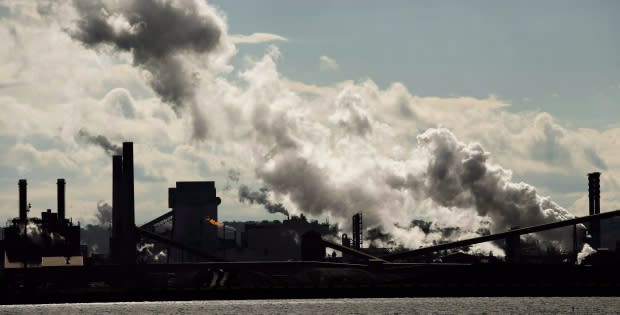Sask. Environmental Society releases 'blueprint' on climate change
The Saskatchewan Environmental Society (SES) gives the province's plan to address climate change a failing grade — mostly due to lack of ambition.
SES released a report Tuesday on climate change in Saskatchewan co-authored by Peter Prebble, Margret Asmuss, Ann Coxworth and R.A. (Bob) Halliday. It includes signs of climate change in the province, recommendations to reduce greenhouse gases and criticism of Prairie Resilience, the province's climate change strategy.
The report, titled "Prairie Resilience" is Not Enough, says parts of the province are seeing record-high summer temperatures, record-low precipitation levels and intensifying forest fire seasons, while other parts are seeing major flooding and "intense precipitation events."
It says there has been an "acceleration in the number of extreme weather events, as reflected in Saskatchewan government spending on disaster assistance."
The government spent $1,500,000 in 2002 and $32,795,000 in 2017 under the government of Saskatchewan's Provincial Disaster Program, according to the report.
Between those years, the highest amount spent was $157,115,000 in 2012. The report says these numbers don't include crop insurance payments or firefighting costs.
Greenhouse gas
The report also addresses Saskatchewan's greenhouse gas footprint and emphasizes the need to reduce it.
Saskatchewan has one of the highest per-capita emission rates in the world, according to the report.
It says Saskatchewan makes up 10.8 per cent of Canada's emissions total, despite having just over three per cent of the country's population.

The majority of the province's emissions come from the oil and gas sector, electricity generation and agriculture.
SES says it supports a carbon tax, citing the "positive impact of adopting a price on carbon and in negative impact of removing it," referring to a carbon levy in Australia.
Australia saw a 1.1 per cent drop in greenhouse gas emissions under a levy, according to the report, but emissions have been rising on an average of 1.3 per cent each year since the levy was repealed in 2014.
"In order to have any chance of achieving the required level of reductions these will need to be accompanied by a price on carbon," said Ann Coxworth, co-author of the SES report.
Prairie Resilience
The report includes both praise and criticism of Prairie Resilience.
It commends the plan's commitment to reducing emissions in the oil and gas and electricity-generation sectors. However, the SES report says Prairie Resilience doesn't go far enough, since oil and gas account for a combined 51 per cent of the province's greenhouse gas emissions.
The SES report has numerous recommendations, such as cutting back on venting methane gas unless it's for safety reasons, setting strict regulations for monitoring and repairing methane leaks and denying further permits to extract the heavy oil resources with the highest carbon content.
The report also recommends completely phasing out conventional coal-fired power stations, investing "heavily" in electricity efficiency and expanding renewable power such as wind and solar power, among other measures.

"We're also uneasy about the fact that as Saskatchewan moves off coal, it's increasing its reliance on natural gas for electricity generation," said report co-author Bob Halliday.
"That's a problem in itself and it's an unsustainable practice."
There is an emphasis on reducing emissions in the transportation sector as well, which includes establishing financial incentives for purchasing electric, hybrid and ultra-fuel-efficient vehicles.
Another recommendation is to reduce speed limits on divided provincial highways from 110 kilometres per hour to 100 kilometres per hour.
"You know we're going to have to make a little bit of sacrifice in order to meet these climate targets and we think this is a reasonable area to do it," said co-author Peter Prebble.
Step in the right direction
The SES report points out that Prairie Resilience indicates the province is aiming for 12 million-tonne reduction in greenhouse gasses between the electricity generation sector, the oil and gas sector and the industrial sector, but it doesn't include emission targets for other sectors.
The SES report says this is a step in the right direction, but for Canada to meet its obligations under the Paris Climate Agreement it would need to reduce 28 million tonnes of greenhouse gas per year.
In total, the report includes more than 30 options to reduce greenhouse gas emissions.
Environment Minister Dustin Duncan released a statement in response to the SES report Thursday afternoon. He defended Prairie Resilience.
"The Saskatchewan Environmental Society was an active participant in our engagement sessions in 2018. We will certainly review their new recommendations," the statement said.
Duncan also said the province's anti-carbon tax stance has not changed.

